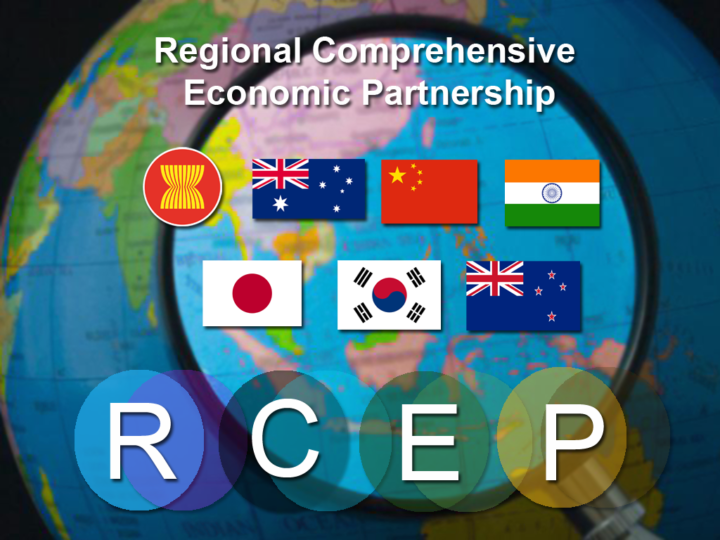By Vijay Prashad and John Ross
On November 15, 15 Asian and Pacific countries signed an agreement known as the Regional Comprehensive Economic Partnership (RCEP) that unites 30 percent of the global population and 30 percent of global gross domestic product (GDP). The entire trade area, which runs from New Zealand to Japan and across the length of China, brings together a range of industries, from mining to high tech, and 2.2 billion consumers. Around 90 percent of tariffs will be cut, and customs procedures will be simplified.
It is significant that China is at the heart of this agreement. From 2005 to 2015, many of these countries had negotiated the Trans-Pacific Partnership (TPP), which was a process driven by the United States to isolate China from the Pacific Rim countries. U.S. President Donald Trump withdrew his country from the TPP, which mothballed it; he favored a more direct “trade war” against China. Meanwhile, at a summitin 2011, finance ministers from across Asia welcomed a proposal from China and Japan to begin negotiating the RCEP, a far larger agreement that was opposed by the United States. Now, it is the RCEP that has been signed, while the TPP languishes without the participation of the United States. There is so far no evidence that the new U.S. government led by Joe Biden would try to revive the TPP.
India had joined the RCEP negotiation process in 2011 but withdrew in 2019. The public view is that India’s government responded to domestic manufacturers, particularly the generic pharmaceutical industry, but it is more likely that India decided not to antagonize Washington. There are more reasonable concerns about the problems of unemployment generation in certain countries as a consequence of trade liberalization.
Major U.S. allies such as Australia, Japan, and New Zealand are party to the RCEP. Both Australia and Japan are members of the U.S.-led Quadrilateral Security Dialogue (or Quad), which is a military alliance against China that includes India. For both Australia and Japan, the economic benefits of the RCEP led them to join regardless of its political implications; New Zealand, which, like Australia, is part of the Five Eyes intelligence alliance with the United States, also joined purely for realistic economic reasons. This is—nonetheless—a major political blow for the United States and the cold war it has attempted to impose on China.
This article was produced by Globetrotter.
Vijay Prashad is an Indian historian, editor and journalist. He is a writing fellow and chief correspondent at Globetrotter. He is the chief editor of LeftWord Books and the director of Tricontinental: Institute for Social Research. He is a senior non-resident fellow at Chongyang Institute for Financial Studies, Renmin University of China. He has written more than 20 books, including The Darker Nations and The Poorer Nations. His latest book is Washington Bullets, with an introduction by Evo Morales Ayma.
John Ross is a senior fellow at Chongyang Institute for Financial Studies, Renmin University of China. His writing on the Chinese and U.S. economies and geopolitics has been published widely online, and he is the author of two books published in China, Don’t Misunderstand China’s Economy and The Great Chess Game. He was previously director of economic policy for the mayor of London.






